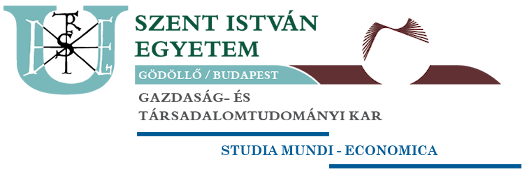Borfogyasztói és borturisztikai felmérés Monoron
Monor a magyar bortermelés nagy hagyományokkal bíró területe, amely kis ültetvény méretével, de európai léptékben is jelentős, több mint 900 pincés pincefalujával különleges adottságokkal bír. A kutatás rávilágít, hogy a Monori járáson kívül nem ismert a monori pincefalu, méretéről, létezéséről sem tud a válaszadók többsége. A megkérdezettek, 46,7%-a tudott helyes választ megjelölni arra, hogy mi az OEM megjelölés, és a minta mindössze 36,4% tudta, hogy van Monori OEM. Összesen 280 fő válaszolt arra a kérdésre, hogy ha részt vett monori borrendezvényen, akkor mennyire volt elégedett. A válaszok súlyozott átlaga 7,51 volt 10-es Likert-skálán, tehát az elégedettség magas szintű. A monori bornak rendszeres fogyasztója kizárólag a Monori járásban van. Ez kiemelten jelzi, hogy a rövid ellátási láncú értékesítés nélkül a helyi termelés nem létezhetne. Emellett Budapest és környéke lehet expanziós célpont. A válaszadók 85%-a a monori borral szemben komolyabb fenntartással nincs, azt többnyire jónak értékeli. A megkérdezettek 33,1%-a 500 és 1000 Ft közötti árat fizetne egy palack borért, közel 40%-a 1000-1500 Ft közötti összeget sem sajnálna erre a célra. Ezalapján a megkérdezettek többsége, a monori palackozott borért többet fizetne, mint a korrigált országos átlagár. Egy liternyi palackozott bor és a folyóbor iránti fizetésihajlandóságot összevetve 2-2,6-szeres árat lehet elérni, amely belátható, hogy extraprofitot eredményez a palackozott termék értékesítése esetén. A válaszadók több mint 85%-a venne Monori bort, a palackozott és a folyó borra leadott preferencia szavazatok számosságát vizsgálva, a palackozott bort 1,5-szer többen vennék meg, mint a folyóbort. Szín alapján a fehér borok támogatottsága minden korosztályban a legmagasabb. A Z generációnál idősebb korosztályokban, ezt követi a vörös, majd a rozé.
Monor is an area of Hungarian wine production with a long tradition, it’s plantation size is small, but on the European scale cellar village of more than 900 cellars it’s an area with special features. The research reveals that the cellar village of Monor is not known outside the Monor district, and most of the respondents do not know about its size or existence. Of those surveyed, 46.7% were able to mark the correct answer as to what the OEM mark was, and only 36.4% of the sample knew they had a Monor OEM. A total of 280 people answered the question of how satisfied they were when they attended a wine event in Monor. The weighted average of the responses was 7.51 on a Likert scale of 10, so satisfaction was high. The regular consumer of Monori wine is only in the Monori district. This is a strong indication that without short supply chain sales, local production could not exist. In addition, Budapest and its suburb can be an expansion target. Eighty-five percent of respondents have no serious reservations about Monor wine, mostly rating it as good. 33.1% of the respondents would pay a price between 500 and 1000 HUF for a bottle of wine, almost 40% would not regret an amount between 1000-1500 HUF for this purpose. On this basis, the majority of respondents would pay more for bottled wine in Monor than the average price. Comparing the willingness to pay for a liter of bottled wine and tank wine, a price of 2-2.6 times can be achieved, which can be seen to result in an extra profit when selling the bottled product. More than 85% of respondents would buy Monor wine, considering the multiplicity of preference votes cast for bottled and tank wine, 1.5 times more would buy bottled wine than tank wine. Based on color, popularity of white wine is highest in all ages. In generations older than Generation Z, this is followed by red and then rosé.
